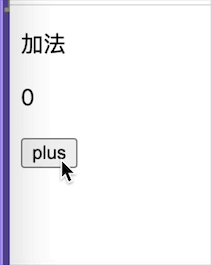撸代码之前还是要搞清楚作用比较好,不然洋洋洒洒的撸了个天昏地暗,却不知道为什么用这个姿势撸,不就尴尬了吗?要知其然,还要知其所以然,论掌握撸代码姿势的重要性!
React.native是facebook开源的一套基于JavaScript的开源框架,
很方便用来开发移动设备的app。
而且,方便及时更新app的UI与数据,也很方便部署。
在react-native的ios项目中,界面搭建部分是一个js文件:index.ios.js。下面对这个文件进行一下解读,方便后续开发中明白各个部分的作用。
1.引用React
import React,{ Component } from 'react';
2.控件的引入
import {
AppRegistry,StyleSheet,Text,View,ListView,TouchableOpacity
} from 'react-native';
3.样式设置
//设置样式
const styles = StyleSheet.create({
container: {
flex: 1,justifyContent: 'center',alignItems: 'center',backgroundColor: '#F5FCFF',},welcome: {
fontSize: 20,textAlign: 'center',margin: 10,instructions: {
textAlign: 'center',color: '#333333',marginBottom: 5,});
作用:定义了一段应用在 “Hello World” 文本上的样式。
React Native 使用 CSS 来定义应用界面的样式。
4.创建React组件对应的类
export default class HelloWorld extends Component {
render() {
return (
<View style={styles.container}>
<Text style={styles.welcome}>
Welcome to React Native!
</Text>
<Text style={styles.instructions}>
To get started,edit index.android.js
</Text>
<Text style={styles.instructions}>
Double tap R on your keyboard to reload,{'\n'}
Shake or press menu button for dev menu
</Text>
</View>
);
}
}
解释一下:
- 组件渲染的方法:
render() {
return ();
}
注意:只有当组件被渲染时,必须实现render接口方法,因为,只有render方法,是用于输出内容组件内容的;其他接口方法,都是可选的。
- 标签定义视图
<View style={styles.container}>
</View>
作用:设置显示区域,相当于iOS中的UIView控件(Objective-c和Swift)
- 标签定义文本
<Text style={styles.welcome}>
Welcome to React Native!
</Text>
作用:设置并显示字符串,相当于iOS的UILabel控件(Objective-c和Swift)。
- 定义程序入口
AppRegistry.registerComponent('HelloWorld',() => HelloWorld);
作用:用AppRegistry的registerComponent( )方法,定义了App的入口,并提供了根组件。




